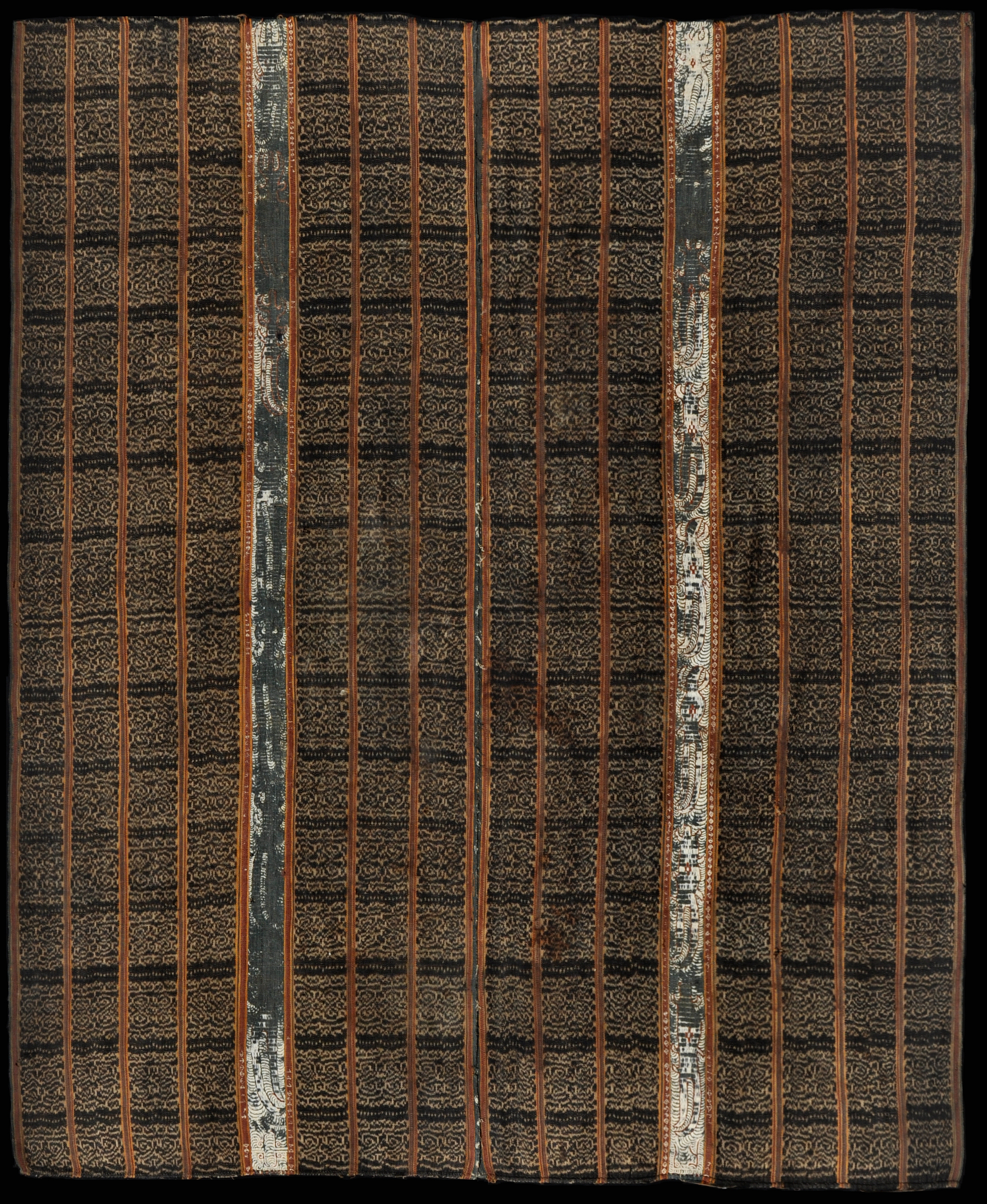| |
 mouse over to magnify mouse over to magnify
| | | | 168 Sumatra, Lampung
Tapis (sarong)
| | Locale: | Paminggir, mountain people. | | Period: | 18th-19th c. | | Panels: | 2 | | Design: | Two panels with seven bands of ikat work in a dark yellow on dark brown, and one band of silk embroidery each. The embroidery has squid-like patterns called cumi cumi that may represent ancestor spirits. The ikated ground, badan, shows intricate, curling forms of unknown significance. This type of tapis is typical for Lampung mountain people. | | Size: | 112 x 134.5 cm (44 x 52.9 in) | | Yarn: | Cotton, hand-spun, fine | | Comment: | Antique ceremonial sarong, tapis inu, with ikat work of high quality. Panels have been detached and, going by the differing levels of wear, appear to have lived separate lives a long time, perhaps having been passed on as pusaka through two different family lines. On one panel about one fifth of the embroidery has worn away, on the other panel only traces of embroidery are left, but the ikated sections of both are unaffected. One very small old repair, two tiny holes, one elongated stain, perhaps coffee, otherwise in good overall condition for its age. The ikat work is uncommonly clear for a tapis. [Image shows only one of the two panels, rotated 90 degrees to allow greater detail.] | | Background: | Additional information in chapters on Sumatra and Lampung. | | Published: |
Woven Languages, 2014. | | Sources: | Very similar to Art Inst. of Chicago, Bakwin Collection, 2002.913 and to tapis dated circa 1850 in Marval and Breguet, Au Fil des Iles, Fig. 33. Similar also to tapis in Holmgren & Spertus Collection, Yale Univ., ILE2006.4.141. Ours has narrower bands of embroidery, and seven bands of ikat per panel versus six. Embroidery on Yale and Bakwin pieces also worn, though not to same degree. Similar tapis, probably younger, from National Gallery of Australia depicted in Maxwell, Textiles of Southeast Asia, Fig. 475. See also Gittinger, Splendid Symbols, Fig. 43; Khan Majlis, Woven Messages, Fig. 68, 69; and Völger and Von Welck, Indonesian Textiles, Appendix Fig. 78. From old Dutch collection. | | |
 ©Peter ten Hoopen, 2025
All rights reserved.
|
|


